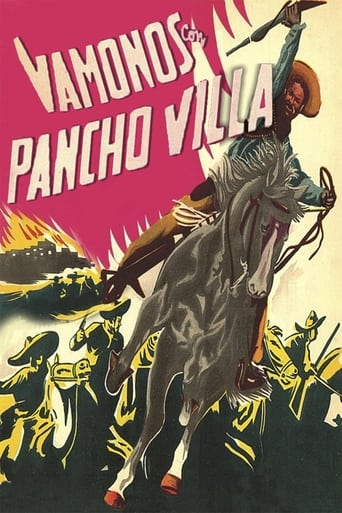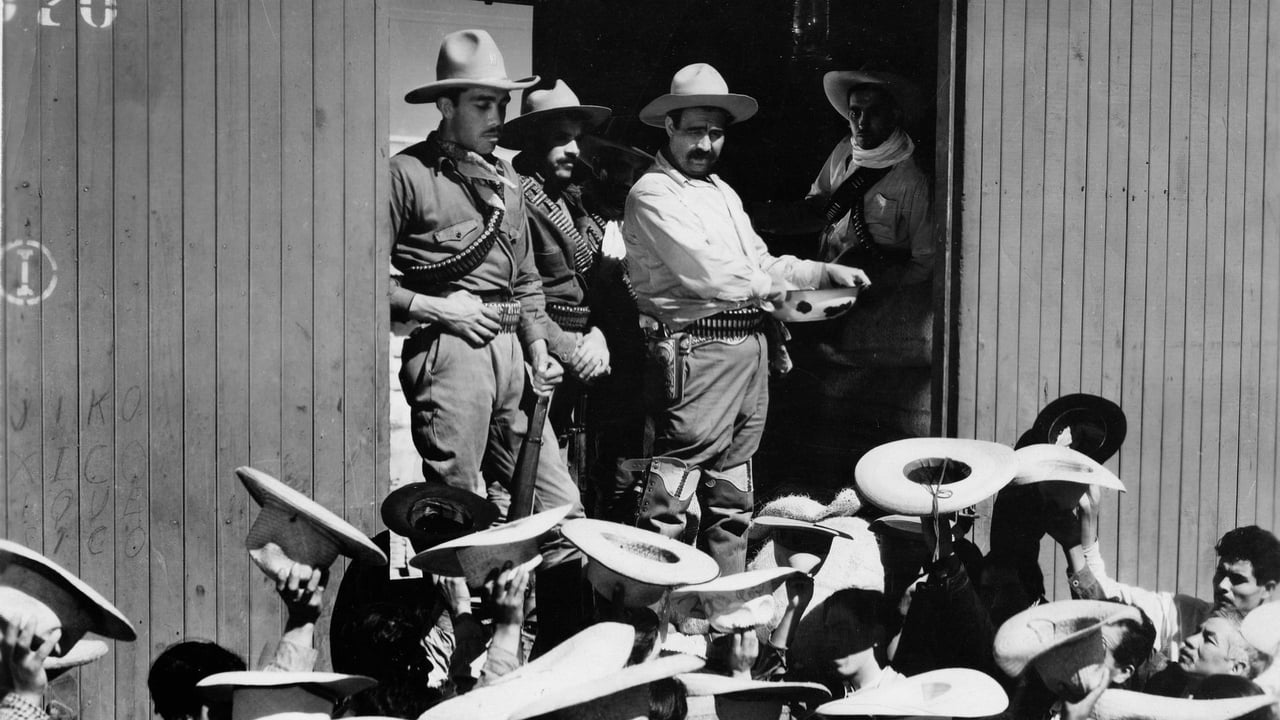morlantdk
I was lucky enough to watch this film on TV and the digitally mastered and renewed version on DVD produced by the UNAM (Mexico's Autonomous National University) finishes when Tiburcio is left after he shot Becerrillo because he suffered from measles. Villa fears Tiburcio because he believes he has measles, too, and tells him to wait there, but Tiburcio walks along the railroad.Then, in the TV version I watched, after this Tiburcio returns home and goes back to his peasant life, but Villa finds him and tells him to join the army again. Tiburcio declines because he says he needs to take care of his family and that is the only thing worth in his life. Villa says nothing and enters another room where Tiburcio's wife and children are and he shoots them, believing that now Tiburcio will rejoin his ranks, but the peasant gets a gun and tries to kill Villa, but his escorts prevent that by shooting Tiburcio. After that, Villa says it is too bad that such a good warrior did not want to continue struggling and leaves that house.
jessicacoco2005
Poorly directed with a weak script and lacking character development, it tells the story of 6 idealistic peasants called the Lions of San Pablo who join Pancho Villa's army. The film is cut up into episodic segments each ending in the noble death of a soldier. Themes of disillusionment and disenchantment permeate the film.War is never glamorous, often not fought honorably either: Often the most heroic die while the cowards and opportunists survive and prosper. This film depicts war in precisely that fashion.Finance Banks subsidized the making of this film and upper-class critics lauded this terrible film, not due to its artistic merits (which it lacks), but due to it's anti-revolutionary message. It depicts Villa as a monster and the revolution as evil. It is pure propaganda failing to show the suffering and starvation of the majority of the population, who were peons (debt slaves). It was their desire to end this suffering and create a better world that led to the Mexican Revolution. Pancho Villa wasn't a saint. He was a man. However, the peons and workers wouldn't have joined or supported Villa's army if he had been a monster. True the revolution came to an end, but not because Villa or Zapata were inhuman men, but because the suffering peons could not compete with American-made machine guns imported by the Obregon regime who supported big American corporations in Mexico. In fact, Villa & Zapata were so popular, they had to be assassinated: Zapata in 1919 & Villa in 1923.The revolution though was from a failure, however, as unions became legal, working conditions improved, and land was redistributed to the peasants. This film is straight revisionism (rewriting of history). In fact, its original ending had to be changed. It was so anti-revolutionary there were fears of rioting by many Villa's followers.
MartinHafer
Many folks consider this one of the very best Mexican films and I noticed that most of the reviews for the film loved it. The Mexican-based reviewers all gave it 10s or 9s on IMDb. The sole non-Mexican (before this review) was not in the least impressed by the film--giving it a 4! I think this is because the film has a very strong resonance for Mexicans--something that will likely be lost on other folks. Like the lone negative review, I don't have the emotional or cultural connection that made me love "Let's Go With Pancho Villa"-- and that may be why I was also so indifferent to the film. I didn't hate it but I obviously didn't see it in what the Mexican reviewers saw.The film is about a group of six men from a small Mexican town who call themselves "Los Leones de San Pablo" (The Lions of St. Paul). They join up with Pancho Villa's revolutionary army and through the course of the film, they die off one by one. That is, until the end when there are two left and one of them has smallpox--and the other is ordered to kill him and burn his body!!After doing his duty, the sole survivor simply walks off into the night--presumably to return home to his family. HOWEVER, the DVD also contains an alternate ending--one that seems tacked on to make the viewers understand that Villa, after a while, became a real scum-bag and a man whose army lost their ideas. While the nihilistic alternate ending does a good job of making you hate Villa, it also seems overlong and a bit silly.So why was I so indifferent to the film? The biggest reason were the battle scenes. Many (particularly earlier in the film) seemed almost like they were filmed in slow motion and there was no energy whatsoever about them. What SHOULD have been rousing scenes instead just seemed to drag on and on. So, technically speaking, this aspect of the film left a lot to be desired. I also thought the character 'Fatso' was a bit of a cheap stereotype. As for what I liked, when they weren't fighting, the acting was quite nice-- subdued but in a good way. Overall, a film that I was only mildly intrigued by at best and one that, to me, isn't even close to the best Mexico has to offer.
Andres Cardenas
Vamonos con Pancho Villa is officially considered as the best movie ever made in Mexico. I personally do not agree to it but these are the facts from the Mexican Cinematography Industry Council. Revolutions, or any war for that manner are never nice happenings. Revolutions/wars imply the fact that many suffer to achieve an ultimate goal of a better life for all involved. In this movie that is exactly what goes on. A group of peasants, tired of the way they are treated by a few powerful owners of the wealth in Mexico, decide to get up in arms against them. There are 2 major leaders of this Revolution that started in 1910. Emiliano Zapata in the South, and Pancho Villa in the North. This movie tells the story, one of hundreds that have been told, about a group of peasants that join Villa's army. The crude scenes that are seen in the movie are just a pale reflection of what happened in those times. The movie, with all the technical limitations of the times(1935)is a magnificent work of art.


 AD
AD



